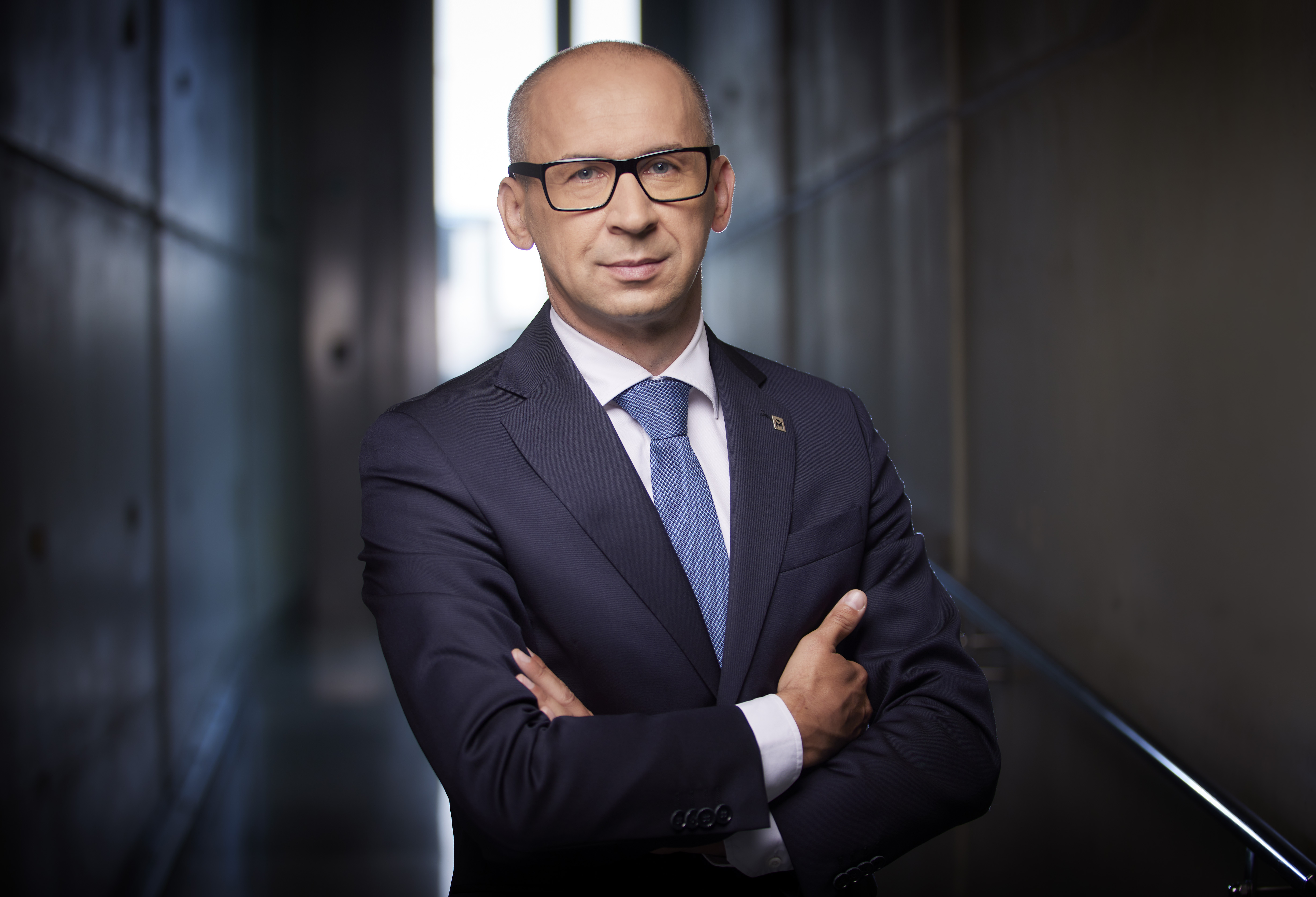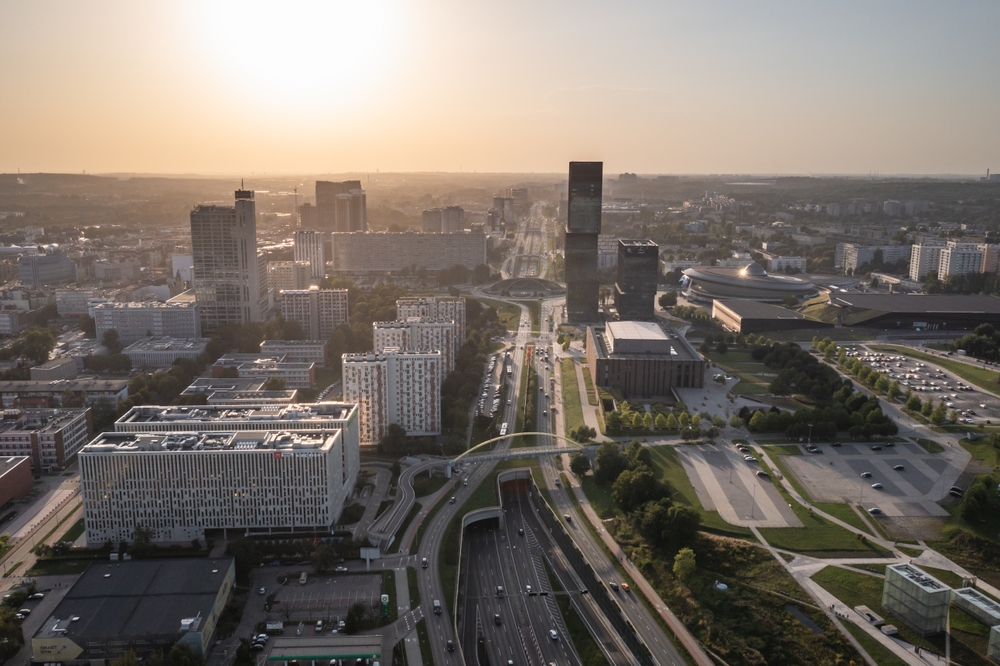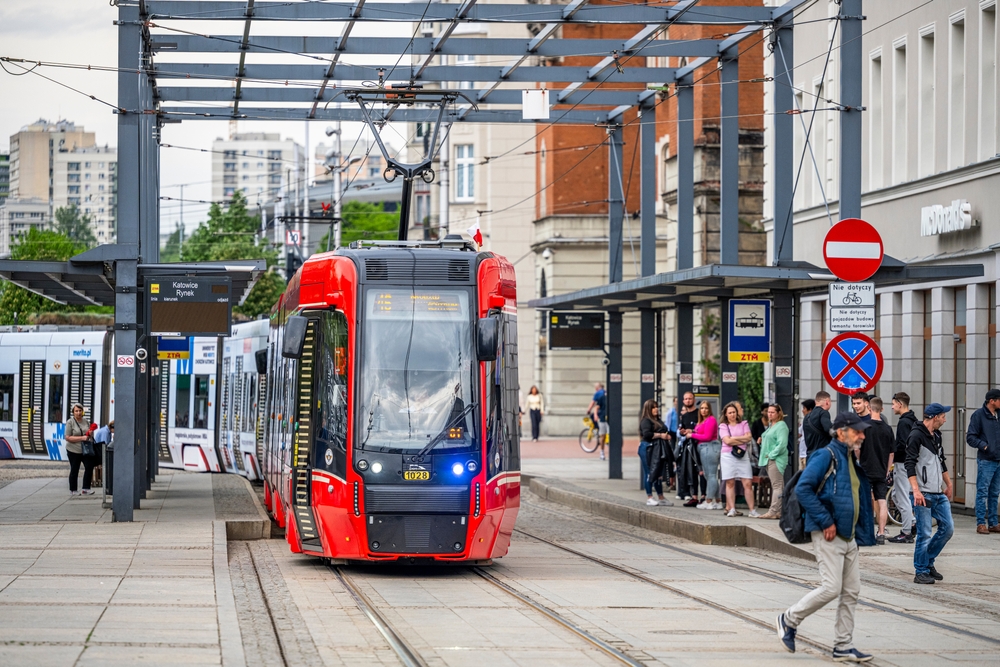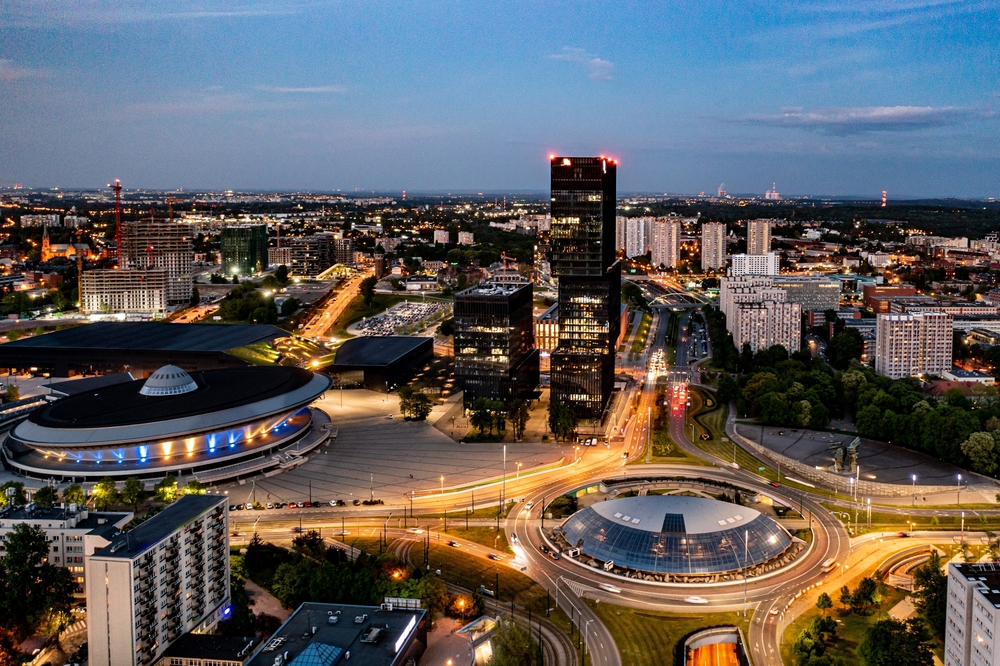On-demand night transport and drone monitoring. GZM doesn't skimp.

- - Smart cities are those that use modern technologies, especially digital ones, to improve the quality of life of their inhabitants - says Kazimierz Karolczak, chairman of the Upper Silesian-Zagłębie Metropolis.
- GZM has the largest Metrorower bike rental in Poland and the third largest in Europe.
- In the spirit of smart city, GZM is conducting a pilot project using drones and infrared to map places with high pollution.
In the modern world, modern solutions are essential to improving the quality of life for residents. Kazimierz Karolczak, Chairman of the Upper Silesian-Zagłębie Metropolis, argues in an interview with Portal Samorządowy that ecological and innovative solutions in municipalities are no longer a distant dream, but a necessity of the present.
Kazimierz Karolczak, Chairman of the Upper Silesian-Zagłębie Metropolis (photo: GZM press materials) I would like us to talk in the context of smart city - which of the solutions implemented so far by GZM can be considered key "smart" investments?
Kazimierz Karolczak, chairman of the Upper Silesian-Zagłębie Metropolis: "We believe that smart cities are those that leverage modern technologies, especially digital ones, to improve the quality of life for their residents. Of course, along the way, we still have to implement these solutions in urban infrastructure , public services, and environmental monitoring, but it's the ultimate recipients of these solutions that are most important to us."
A few examples of Smart City initiatives include a range of solutions we've implemented in public transport, including transport integration, where a single ticket purchased via the GZM Transport network, within the app, allows users to use buses, trolleybuses, trams, regional trains, and Metrorower. Thanks to the app's Start/Stop feature, the system automatically ensures that passengers don't pay more than the equivalent of a daily ticket when using public transport multiple times. This option also allows for short trips to be billed for nominal fees.
We are the only public transport provider in Poland to offer Metrorower, a large-scale urban bike rental service . With 7,000 third-generation bikes and over 900 rental stations, it's the largest system in Poland and the third largest in Europe. Thanks to system integration, passengers with a GZM Transport account can use the bikes for one hour a day at no extra charge.
Smart solutions also mean sharing data. Thanks to funding from the Polish Deal Government Fund, we are implementing the GZM Open Data project in collaboration with the Ministry of Digital Affairs. As part of this project, we share high-quality public data, creating a platform for its use in innovative solutions and building attractive offerings for investors and residents. Data sharing is a key priority for us.
We will talk about data sharing later, but please tell us what technologies or innovations are currently in the testing or pilot phase within the metropolis?
One of the most advanced and innovative areas we are currently testing in the Metropolis is unmanned aerial vehicles , or drones. For several years, we have been consistently developing an ecosystem of urban drone services – from spatial planning and principles of their safe use to real-world demonstrations of applications in municipal tasks.
Since 2022, we have been collaborating with the Silesian University of Technology on a specially designated test area covering the city of Gliwice and the municipalities of Pilchowice and Sośnicowice. Equipped with infrastructure developed as part of the "3 Areas" competition, run by the Polish Air Navigation Services Agency, it provides a safe space for testing modern UAV technologies.
We are currently conducting a series of demonstrations aimed at aligning the needs of municipalities with the capabilities offered by drones. We began with environmental monitoring – based on reports from municipalities, we identified locations requiring flight inspections , often difficult to access. We utilized RGB and thermal imaging cameras to create orthophotomaps and identify pollution sources. Flights were also conducted at night, allowing for better capture of thermal differences. Further scenarios are planned for the fall.
In parallel, in cooperation with Katowice, Tychy, Bytom, Zabrze, and the Silesian University of Technology, we are participating in a PAŻP project within the KPO framework, which aims to develop UAV infrastructure and traffic management systems. This will enable flights—including beyond visual line of sight—to be conducted quickly, safely, and to the benefit of cities and residents.
The Upper Silesian-Zagłębie Metropolis is testing further intelligent solutions (photo: shutterstock/Fotokon) Which technologies are of interest to metropolises as potential tools for urban transformation?
The Upper Silesian-Zagłębie Metropolis is primarily interested in technologies that have a real impact on improving the functioning of cities and the quality of life of their residents . Besides the unmanned systems mentioned above, these include artificial intelligence (AI) and the Internet of Things (IoT).
We see AI as the foundation of cities' digital transformation and a key element in the development of our economy. We are currently participating in consultations on the strategic document "Artificial Intelligence Development Policy in Poland until 2030." We are in talks with the Ministry of Digital Affairs to recognize GZM as one of the key national centers for the development and implementation of AI technologies. We are also building a base of experts and partners to realize this ambition. I am convinced that our scientific and research potential, as well as the existing and planned infrastructure, fully justify our recognition as one of these centers.
The second key technology is the Internet of Things , which we understand as a sensor infrastructure enabling the acquisition of environmental, transport, and infrastructure data in real time. IoT underpins projects such as Dynamic Passenger Information , which is part of the GZM Transport system, air quality monitoring, and intelligent lighting and energy management.
These technologies, though different in nature, share the potential to provide integrated and systemic support for metropolitan management. In the coming years, they will determine the efficiency of cities, their investment attractiveness, and their ability to respond quickly to social, environmental, and economic challenges.
On-demand night transport and SDIP smart boards In what direction are you developing the idea of “smart mobility”?
"I've already mentioned that we were the first to integrate the city bike system with public transport. With a single Transport GZM ticket, you can use not only public transport but also the Metrorower. As we develop our transport services, we are always open to collaboration with various entities . Thanks to our partnership with Polregio and Koleje Śląskie, the Transport GZM system also includes regional rail."
A new feature recently added to our system is the ability to use our tickets for on-demand night transport in Sosnowiec. Passengers can book it via the app between 11:00 PM and 5:00 AM. We're treating this as a pilot. This service is operated by an external entity, but as soon as the idea of integrating this service with public transport organized by GZM emerged, we decided to give it a try. We're also open to implementing similar services in other cities.
Are there any plans to implement intelligent stops, information boards, and a dynamic passenger information system in smaller municipalities?
The SDIP II sign installation project was implemented over several years and reached the target number of 542 signs. They are located in 34 municipalities. It's also worth noting the SDIP virtual sign , which operates both in the Transport GZM app and via a web browser. This allows anyone to check how many minutes the next bus, tram, or trolleybus on a selected line will arrive at a specific stop.
We're considering using e-paper as an information medium at public transport stops. They won't replace traditional timetables, but they could function as SDIP displays powered by batteries or solar panels. We'd like to test this initially on a pilot basis. This modern solution allows for the display of dynamic information about vehicle departures, as well as special messages, such as traffic disruptions.
GZM transport is based on the integration of several systems (photo: shutterstock/bieszczady_wildlife) What plans does GZM have in terms of electromobility and charging stations – both for public and private transport?
For private users, we've developed a map of electric vehicle charging stations, which is available on the InfoGZM website and is constantly updated. This is one of many maps available on our InfoGZM portal, which we use to present data.
In terms of public transport, we have significantly greater opportunities and are constantly investing in the development of an electric bus fleet and charging infrastructure. We recently secured over PLN 56 million in EU funds for the development of modern mobility.
The project involves, among other things, the purchase of eight new electric buses and four two-station plug-in chargers. Previously, we purchased eight hydrogen fuel cell buses , 18 electric buses, and nine two-station plug-in chargers under the GZM Hydrogen program, for which we received PLN 91 million in funding under the National Recovery Plan. In June, we also concluded a tender for the purchase of 31 buses with charging infrastructure as part of the GZM Green Transport project.
As you can see, we are using all possible means to purchase zero-emission vehicles.
Local government administration collects huge amounts of information every day. Please tell us how Open Data is performing so far. In some cities, data sharing has led to abuses, but what about in GZM?
"In the era of modern cities, transparency and openness to citizens are crucial. Therefore, as part of a nearly two-year project, carried out jointly with PwC Polska and financed by the Polish Deal Government Program, we identified over 1,700 data sets. Of this pool, 446 have been made available on the GZM Open Data portal, and most of them are already updating automatically. We have not received any reports of related abuses. On the contrary, we are constantly receiving signals of how important and necessary this action is."
Every day, local governments collect vast amounts of information on key areas of residents' lives, such as education, ecology, access to culture, public transport, and spatial planning. Properly utilized and combined, this information can be a valuable source of knowledge, supporting more informed decisions regarding the provision of public services. Based on this information, businesses and non-governmental organizations can create tools to monitor the quality of these services and develop their own commercial solutions.
And it's happening. Today, the GZM Open Data portal provides a reliable source of data ready for reuse by local governments, analysts, NGOs, media, and businesses. As a result , GZM provides the largest number of datasets at level 5 of openness among all centers in Poland.
Is GZM planning to create a digital twin?
Creating a fully digital twin is a gigantic undertaking, requiring massive investments in technology, data collection, and analysis, especially when we're talking about an area encompassing 41 cities and municipalities. Of course, the potential benefits of Digital Twin solutions would be significant . That's why we want to test them too.
We are in talks with the Silesian University of Technology to test this technology within the Metrorower system, with the aim of relocating some rental stations to more "optimal" locations. Again, we plan to use maps and data generated by the Open Data and InfoGZM portals for this purpose.
Residents expect to be able to handle most official matters easily, quickly and without leaving home. There's constant talk of transforming GZM into a megacity. This would also entail a massive administrative transformation. Is GZM considering implementing modern administrative systems?
When we think of a megacity, we imagine a strong organism with a political system similar to the capital city of Warsaw, where cities retain existing structures, such as mayors and city councils, but where some competencies, especially those requiring coordination, are transferred to a higher level . Such a solution would, on the one hand, allow cities to retain their own distinct identity, and on the other hand, ensure that residents' problems are addressed more effectively.
Of course, this transformation wouldn't be possible without the use of technology in government to streamline its operations and service delivery. Above all, it's about making life easier for residents of such a large urban entity – electronic communication, digitization of processes, and online access to services.
Residents expect, and I expect this myself, to be able to handle most official matters easily, quickly, and without leaving home. This is what modern times and our pace of life demand.
Technology is all about making life easier for residents (photo: shutterstock/Daniel Jedzura) What are the biggest obstacles to implementing Smart City solutions in a metropolis?
"Implementing these types of solutions presents various obstacles. One of them may be financial issues and the fact that smart technologies seem expensive at first glance . However, when we look at the long-term benefits, we see that these investments pay off relatively quickly; not in the sense that they generate revenue, but rather that using new technologies is often simply cheaper than traditional forms of delivering a given service."
The biggest challenge today is no longer the technologies themselves—these are available and developing dynamically—but the organizational, legal, and institutional conditions for their implementation. A smart city is not just about purchasing the right system , but above all, integrating solutions within a complex, multi-stakeholder urban environment. In the case of a metropolis, where 41 municipalities of varying sizes, potential, and needs collaborate , coordinating activities and standardizing data and services becomes a key challenge . It's arduous work, but that's precisely our task.
In this sense, we can say that a metropolitan union is a smart solution in itself . We increasingly think of ourselves not as a specific structure or territory, but as an operating system that allows entities to effectively implement specific activities. We are no longer thinking of ourselves as maps. We want to see our boundaries not where city boundaries run, but where barriers or bottlenecks in solving problems arise.
Treating the metropolis as an "operating system" rather than another level of government means moving away from the traditional, bureaucratic thinking of the city as an official structure in favor of a functional and dynamic approach. In this view , the metropolis is not merely a structure of territorial authority, but a platform that integrates and coordinates the various flows that define modern urban life. Just as an operating system ensures that applications work together, the metropolis should ensure that the activities of individual municipalities, institutions, and sectors are synchronized.

portalsamorzadowy










